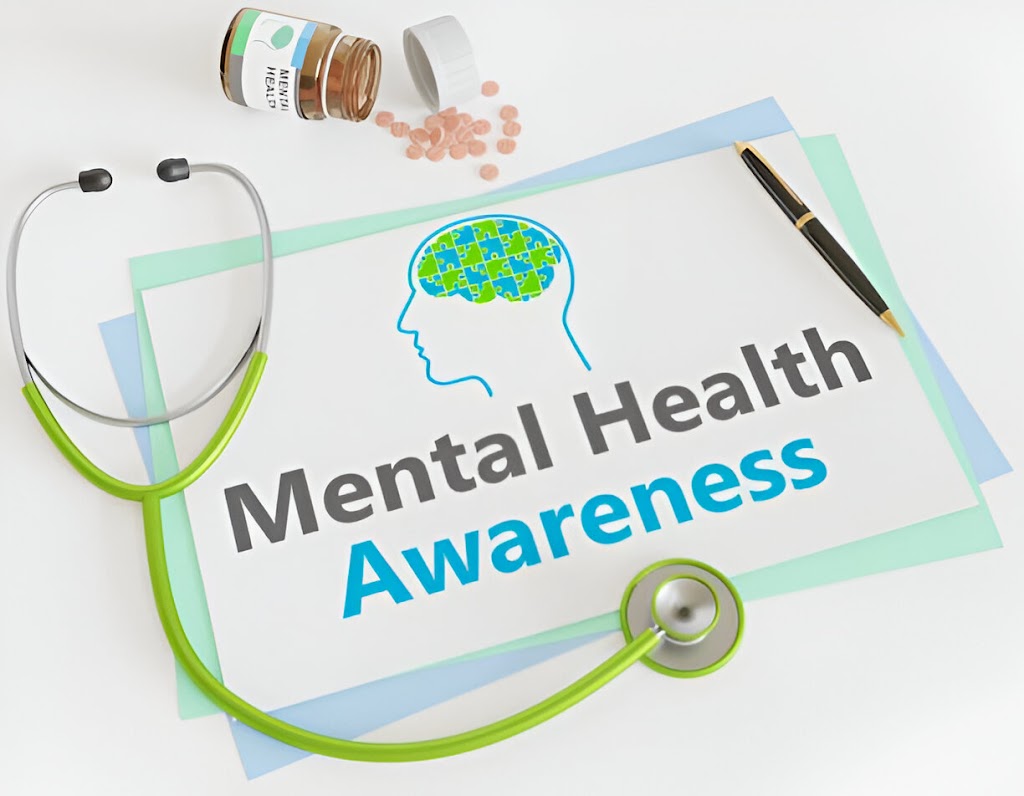Introduction
Anxiety touches everyone – no matter who you are or where you come from. It shows up when things feel stressful or risky, which is natural – but if it sticks around too long or feels too strong, it might turn into something more serious. With how fast life moves these days, and how hard it is to predict what comes next, understanding the many ways anxiety acts can really make a difference.
Anxiety issues might mess with everyday life, affecting job results or how you get along with others. Spotting the warning signals means help can start sooner, leading to better outcomes down the road. Looking at every kind of anxiety condition gives people a chance to understand their own struggles – or stand by someone they care about.
This guide’s meant to walk you through different types of anxiety – like GAD, Panic Disorder, Social Anxiety, Specific Phobias, OCD, PTSD, or Separation Anxiety. Every one comes with unique struggles, signs, how it feels inside.
We’ll check out why getting expert guidance really matters. Because therapies like cognitive-behavioral approaches, drugs, or mindful practices often ease symptoms while boosting daily life. Since understanding these techniques helps people spot helpful resources around them.
Besides shaping daily decisions, emotions heavily influence how we connect with others – so handling anxious feelings matters a lot. When people learn to manage their emotional responses, they’re more likely to stay on track and enjoy life, even when things get tough. Instead of feeling overwhelmed, using hands-on strategies can help calm intense reactions and loosen anxiety’s hold.
This guide’s meant to help you grasp anxiety disorders better, show how they affect people, yet also point out simple ways to get help. Because when folks recognize what’s going on, they’re more likely to act early – leading to healthier minds and calmer daily life.
What Is Anxiety?
Anxiety pops up when things feel stressful, unclear, or risky – it’s totally normal. Most folks deal with it now and then; sometimes it acts like an inner alarm, keeping you sharp. Still, how strong or often it hits differs a lot from one person to another. What shapes this? Traits, surroundings, past moments – all play their part.
Worry, nerves, or fear – that’s what anxiety usually is, especially when there’s no real danger around. Instead of threats, your body might react with a fast heartbeat, sweat, tremors, or an urge to move constantly. Inside, you could feel on edge, short-tempered, or like things are piling up too high. When it hits hard, routine stuff gets harder, choices get shaky, connections start fraying.
Knowing how everyday anxiety differs from an anxiety disorder matters. Normal nervousness usually fades fast, plus it’s linked to clear situations. But when someone has an anxiety disorder, their fear sticks around – often grows – and messes with daily life. That kind of struggle isn’t just passing pressure; it needs real help and care.
Anxiety shows up in different ways – like GAD, Panic Disorder, or Social Anxiety. One kind might bring constant worry, while another causes sudden fear attacks. Some are sparked by memories, others by social settings. These reactions differ widely from person to person. OCD often involves repeated thoughts, whereas phobias focus on specific fears. Trauma plays a big role in PTSD, not so much in separation cases. Emotions range from dread to restlessness depending on the type.
Spotting these contrasts helps people reach out at the right time – while making sense of their feelings. Knowing this sets a solid base for stronger mental well-being, along with smarter ways to handle stress.
Generalized Anxiety Disorder (GAD)
Generalized Anxiety Disorder means constant, intense stress over common daily issues. Those dealing with it usually find it tough to quiet their racing minds – especially since nothing alarming’s actually happening. Over time, this tension wears down both mood and body.
Feeling tense all the time, getting annoyed easily, struggling to concentrate – these often come with fidgeting, tight muscles, low energy, or trouble sleeping. When these stick around, staying grounded feels hard; people end up wiped out, like they’re running on empty.
People with GAD might always expect bad things to happen, picturing the most upsetting possibilities. Because of this ongoing worry, they could end up exhausted, less focused, struggling to feel joy. Their minds stay busy, which messes with jobs, personal connections, even basic daily habits.
Luckily, a few different options work well. One top choice? Cognitive-behavioral therapy, or CBT. This approach lets people spot worried thoughts – then question them instead of just accepting. After that, they learn how to swap those ideas for calmer ones. Along the way, tools like breathing exercises or grounding methods get built into daily routines.
Some people might need meds like SSRIs or temporary anxiety drugs, based on how bad things feel. A counselor can help pick what works best, maybe mixing talk sessions with daily habit shifts to see improvement.
Finding out about GAD and how it’s treated helps ease symptoms while boosting mental calm – so taking that first move matters. Each person’s path may differ, yet progress often starts the same way.
Panic Disorder
Panic disorder means repeated panic attacks – brief bursts of extreme anxiety that build quickly. These moments might seem out of nowhere, hitting hard and fast. When it happens, someone could have tightness in the chest, a racing pulse, trouble breathing, trembling, lightheadedness – or a deep feeling that disaster’s near.
When panic hits, it feels scary on the inside. Some think they’ll black out, lose grip, end up in ER, or worse. Once it happens, the worry about it coming back starts creeping in. That dread makes folks dodge spots or moments where it might strike again.
The body’s reactions might feel so strong, people often think they’re having a health emergency. Because of this, worry grows – leading to more panic plus steering clear of certain situations.
Cognitive-behavioral therapy works well – teaching people to recognize how they react, question scary thinking patterns, while using tools that calm sudden anxiety. On top of that, exposure methods help folks slowly confront uncomfortable feelings or triggers within safe settings.
Lifestyle tweaks – doing daily movement, getting better rest, or handling pressure smarter – make a real difference. When panic hits, practices like slow breathing or staying present might ease things fast. Sometimes, pills come into play to lessen how often – or how hard – the episodes hit.
Focusing on how panic disorder works while using helpful techniques helps people feel more sure of themselves – getting back normal routines bit by bit.
Social Anxiety Disorder (Social Phobia)
Social Anxiety Disorder means feeling extremely scared in social settings or when having to perform. People dealing with it usually stress over how they’re seen, fearing embarrassment or criticism from those around them. Because of this anxiety, normal things – like talking during lessons, going to gatherings, or connecting with strangers – can seem way too hard.
Trembling, turning red, sweating, feeling sick to your stomach, or struggling to talk can show up physically. When people sense they’re being observed or judged, these reactions tend to get worse – so hanging out socially feels tougher.
Feeling anxious around people often leads to doubting yourself, worrying about being judged, yet staying hyper-aware of every action. As days go by, someone might skip gatherings now and then – this shift tends to strain friendships, limit job growth, or drag down daily happiness.
Treatment might involve cognitive-behavioral therapy – this helps people rethink negative ideas while slowly getting used to tough situations via exposure exercises. On top of that, mindfulness plus calming techniques may keep someone more present during social moments.
Peer circles, lessons in handling conversations, or help standing up for yourself might boost self-assurance along with how you talk to people. Over time – through trying things out – a person could get better at dealing with group settings while forming more honest bonds.
Specific Phobias
People with certain phobias feel extreme fear toward specific things – like bugs, tall buildings, planes, shots, or tight spots. This dread usually doesn’t match the real risk; still, it brings strong stress and makes them steer clear of those triggers.
Feeling sudden fear, your heart might race while you sweat or shake – like needing to bolt right away. When this hits, it messes with daily life; going places, doing jobs, hanging out could all get harder based on what scares you.
The best way to handle certain fears? Try exposure therapy – this slowly brings you face-to-face with what scares you, but in a safe setup. As sessions go on, facing those triggers again and again tends to dial down panic while boosting self-assurance.
Cognitive-behavioral therapy might show people how certain thinking patterns feed their fear – then swap those ideas with calmer, clearer ones. Sometimes, meds come into play if anxiety gets too intense while facing fears step by step.
Chilling out, being present, or handling pressure well might go hand in hand with counseling – keeps folks steady when fear shows up. Stick with it, and most start feeling way better, slowly taking charge again.
Obsessive-Compulsive Disorder (OCD)
People with OCD get stuck on persistent, troubling ideas – called obsessions – that they can’t easily shake off. On top of that, they often feel driven to repeat certain actions or thoughts just to cope. Such habits tend to take up hours each day while sparking serious emotional strain. Life becomes harder when routines revolve around hidden rules only the person understands.
Some people fixate on germs, danger, or things being uneven. They respond by washing too much, looking again and again, ticking off numbers, or doing the same thing repeatedly – all just trying to feel less tense. Still, that calm fades fast. Soon enough, everything starts over.
The emotional weight of OCD often feels overwhelming. Some people experience shame or discomfort about their habits, which brings isolation and silence. Because obsessions and rituals never let up, they end up interfering with jobs, connections, and everyday tasks.
Treatment usually involves cognitive-behavioral therapy – more precisely, Exposure and Response Prevention, or ERP. Instead of avoiding worries, people learn to face them without giving in to repetitive actions. Because they stick with it, anxiety slowly drops off. As a result, those looping thoughts lose their grip.
Some meds, like SSRIs, might help manage unwanted thoughts along with worry. Peer groups or calming methods could boost recovery, while good daily routines make a difference too.
With regular effort, plus help from therapy, people dealing with OCD slowly gain control. Instead of feeling stuck, they start noticing changes through mindful habits. Over time, simple routines build confidence and ease their thoughts.
Post-Traumatic Stress Disorder (PTSD)
PTSD might show up after someone goes through – or sees – a really tough experience. People may get sudden memories, bad dreams, unwanted thoughts, feel emotionally flat, or react intensely when something brings back the past.
Trauma often shakes up your emotions, bringing on strong fear, constant alertness, shifts in mood, trouble focusing – also problems trusting others. Some people skip certain spots or scenarios tied to painful memories just to stay calm.
Some people find talk-based methods like CBT useful – they work through tough moments, question negative thoughts, or develop ways to handle stress. Meanwhile, EMDR’s a popular pick for shifting how past trauma feels emotionally, using guided eye motions to rethink painful memories.
Help from others matters when getting better. Loved ones or group members give understanding, reassurance – also strength – as healing happens.
With therapy along with care from others, people start healing – gaining strength while slowly feeling safe again.
Separation Anxiety Disorder
Separation Anxiety Disorder means feeling way too scared or upset when away from people you’re closely attached to. Though usually linked to kids, grown-ups might deal with it too.
Kids might stick close to parents, skip school, dodge bedtime on their own, or say they feel sick before being apart. Such actions could throw off daily life and how feelings grow.
Some grown-ups stress a lot about bad things happening to people they care about, get uneasy when by themselves, yet stay away from anything that involves being apart. Such feelings might mess up connections with others while also holding them back from living freely.
Treatment often involves cognitive-behavioral therapy; this helps people question anxious thinking, slowly handle times apart, while building better ways to cope. When surroundings are encouraging and relationships feel solid, healing emotions becomes easier.
Doing things like staying present, moving your body, or unwinding now and then helps lower stress while boosting how well you handle emotions.
When they get proper help, people can handle their worries while gaining more confidence on their own – this leads to feeling safer over time because guidance makes a difference in how they grow.
Therapies for Anxiety Disorders
A variety of treatments work well for anxiety problems. While cognitive-behavioral therapy stands out, it’s not the only option. This method lets people spot distorted thinking, swap it with fairer ideas – then build practical responses based on what sets off their stress.
Exposure Therapy’s a popular approach – bit by bit, people face what scares them, so they don’t run from it anymore. Because of this, fear fades over time while self-assurance grows stronger.
Some medicines, like SSRIs or SNRIs – or even benzos – can work with counseling to balance brain chemicals while calming intense signs. A doctor might guide you toward the right med setup.
Mindfulness or calming routines – like slow breathing, meditating, maybe tensing and releasing muscles – tend to reduce stress while helping emotions stay steady. Such methods keep people more present, particularly when worry spikes.
A good recovery strategy usually mixes different methods, tailored to fit one person’s situation, how they feel, also what they like.
Managing Emotions with Anxiety Disorders
Dealing with anxiety usually involves handling intense feelings that might seem unmanageable. Figuring out how to cope can make a real difference in your mood and help you get through everyday tasks.
A custom care plan might ease things up. Trying journal work, quiet moments, drawing – or just doing fun activities – can boost mood stability while bringing peace.
When life feels overwhelming, trying things like slow breaths, staying present, or picturing calm scenes can relax your body while steadying your mood. Doing these regularly makes it easier to handle tough moments without getting swept away.
Having help around matters just as much. Sharing feelings with someone you trust brings relief, a sense of calm, because it strengthens bonds. Seeing a therapist or counselor gives direction when dealing with tough moods since they teach practical ways to cope.
Looking after yourself, noticing your feelings, yet staying connected with others helps you handle emotions better – so anxiety feels less overwhelming. Each part plays a role, but together they make coping easier without needing quick fixes or vague promises.
Conclusion
Knowing about various anxiety problems helps you take charge of your mind and feelings. From GAD to panic attacks, social fears, specific phobias, OCD, trauma responses, or separation worries – each one acts differently. Yet every one can be handled when you understand it well and get proper help.
Spotting signs early, while understanding when to reach out, really changes outcomes. Instead of one-size-fits-all fixes, treatments like CBT or facing fears slowly work better if they fit you personally. On top of that, handling emotions well, sticking to daily habits that recharge you, plus having people who’ve got your back – all these boost how good life feels.
When you keep going, know this – reaching out shows courage. Stay willing to grow, test fresh ways to cope, or talk to someone trained if things feel heavy; each choice nudges you closer to feeling better and standing strong.
You’re not by yourself on this path – help from experts, tools, plus real people who care can walk beside you through each part.
Additional Resources
If you’re curious about anxiety disorders – or need extra help – there’s a range of useful tools out there:
Books
-
The Anxiety and Phobia Workbook – a hands-on guide full of useful exercises along with daily coping tools.
Websites
-
Anxiety and Depression Association of America (ADAA)
-
National Alliance on Mental Illness (NAMI)
These sites give learning stuff – also handy tips – with posts by pros.
Support Organizations
-
NAMI Support Groups
-
ADAA Online Support Community
Some groups offer help from others who understand, phone lines you can call, or local activities – perfect if you’re struggling with worry.
Professional Help
Chatting with certified therapists – or even counselors – gives you custom advice. Try nearby clinics, online services, or wellness hubs to track down solid help when needed.
Reaching out is a powerful first step toward better emotional health and well-being.




